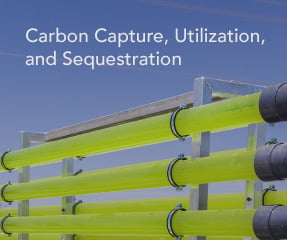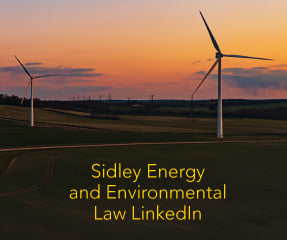Upcoming Events
May 142024
Sidley Partner Justin Savage to Speak at the AFPM National Occupational & Process Safety Conference & Exhibition
Sidley partner and Environmental practice co-leader Justin Savage will serve as a presenter during the upcoming AFPM (American Fuel and Petrochemical Manufacturers) National Occupational & Process Safety Conference & Exhibition taking place May 14 - May 16, 2024 in San Antonio, Texas. The conference is one of the industry’s most significant events for safety professionals in the refining and petrochemical industries, bringing together engineers, managers, and corporate safely professionals.
More information here.
(more…)
May 222024
Fireside Chat With White House Council on Environmental Quality Chair Brenda Mallory
Please join Sidley and the American Bar Association’s (ABA) Section of Environment, Energy and Resources (SEER) for a conversation with White House Council on Environmental Quality Chair Brenda Mallory, moderated by Nicole E. Noëlliste, Sidley Senior Managing Associate and Programs Vice-Chair of ABA SEER Air Quality Committee, with introductions by Garrett Kral, Co-Chair of ABA SEER Air Quality Committee.
(more…)
Resources
Meet The Team

Samuel B. Boxerman
Washington, D.C.
Environmental and Energy Brief
Keturah A. Brown
Washington, D.C.
Environmental and Energy Brief
Grace Dickson Gerbas
Dallas
Environmental and Energy Brief
Terence T. Healey
Boston
Environmental and Energy Brief
Kenneth W. Irvin
Washington, D.C.
Environmental and Energy Brief
Christopher J. Polito
Washington, D.C.
Environmental and Energy Brief
Casey Khan
Houston
Environmental and Energy Brief
Michael L. Lisak
Chicago
Environmental and Energy Brief
Brittany A. Bolen
Washington, D.C.
Environmental and Energy Brief
Aaron L. Flyer
Washington, D.C.
Environmental and Energy Brief
Brooklyn Hildebrandt
Los Angeles
Environmental and Energy Brief
Nicole E. Noëlliste
Washington, D.C.
Environmental and Energy Brief
Hannah Posen
Chicago
Environmental and Energy Brief
Jack Raffetto
Washington, D.C.
Environmental and Energy Brief









Nothing Found
Sorry, no posts matched your criteria